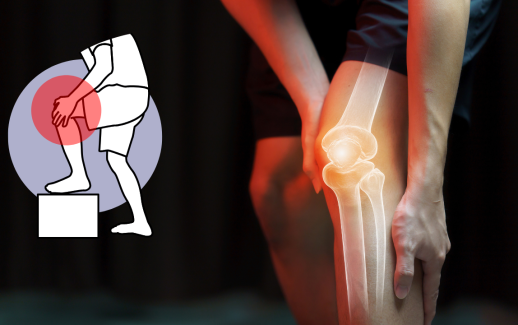Dr. Jordan Sudberg Explains Long COVID and Chronic Pain: What Every Patient Needs to Know
The COVID-19 pandemic has reshaped nearly every aspect of life, but one of the most challenging outcomes continues to unfold in the form of long COVID—a constellation of lingering symptoms that persist weeks or months after the initial infection. Among these persistent symptoms, chronic pain has emerged as a significant concern for many patients.
Dr. Jordan Sudberg, a renowned pain management specialist, has been closely monitoring how long COVID impacts pain pathways and patient quality of life. In this detailed guide, Dr. Sudberg sheds light on what chronic pain after COVID-19 looks like, why it happens, and what patients can do to manage their symptoms effectively.
Understanding Long COVID: More Than Just Fatigue
Long COVID, also called post-acute sequelae of SARS-CoV-2 infection (PASC), refers to symptoms lasting beyond 4 weeks from the initial COVID-19 illness. These symptoms can be diverse, including fatigue, brain fog, shortness of breath, and importantly—chronic pain.
Dr. Sudberg explains:
“While respiratory and neurological symptoms have received a lot of attention, many long COVID patients struggle with ongoing pain that can be debilitating.”
This pain may present as:
- Muscle aches and joint pain
- Nerve pain or neuropathy
- Headaches and migraines
- Chest or abdominal pain
- Generalized body pain similar to fibromyalgia
Why Does Chronic Pain Occur After COVID-19?
The exact mechanisms behind long COVID-related pain are still being studied, but several theories have emerged:
1. Immune System Dysregulation
COVID-19 triggers an intense immune response. For some, this immune activation lingers, causing chronic inflammation that can affect muscles, nerves, and joints.
2. Nervous System Impact
Dr. Sudberg notes:
“The virus can impact the nervous system directly or indirectly, leading to central sensitization—a heightened pain response where the nervous system amplifies pain signals.”
This mechanism is similar to what we see in chronic pain conditions like fibromyalgia.
3. Post-viral Fatigue and Deconditioning
Prolonged illness often leads to muscle weakness and reduced physical activity, which can exacerbate pain and stiffness.
4. Psychological Factors
Anxiety, depression, and post-traumatic stress related to the illness and pandemic experience can also increase pain perception.
What Does Chronic Pain in Long COVID Feel Like?
Patients describe their pain in diverse ways. Dr. Sudberg explains common presentations:
- Muscle and joint aches: Persistent soreness or stiffness, often migratory and fluctuating.
- Neuropathic pain: Burning, tingling, or electric shock sensations, sometimes accompanied by numbness.
- Headaches: Chronic daily headaches or migraines that worsen over time.
- Chest pain: Not necessarily related to heart or lung damage but linked to muscular or nerve irritation.
Because these symptoms overlap with other chronic pain syndromes, a thorough evaluation is essential.
How Should Patients Approach Diagnosis and Treatment?
Comprehensive Assessment Is Key
Dr. Sudberg advises patients experiencing long COVID pain to seek evaluation at specialized clinics that understand the condition’s complexity.
“Assessment includes ruling out other causes, conducting neurological exams, and sometimes advanced imaging or nerve studies.”
Understanding the type and source of pain guides targeted treatment.
Multidisciplinary Treatment Plans
No single therapy works for everyone. Dr. Sudberg stresses the importance of a comprehensive approach that may include:
- Medications: Pain relievers, anti-inflammatories, neuropathic agents like gabapentin or duloxetine.
- Physical Therapy: Customized to rebuild strength and flexibility without triggering flare-ups.
- Psychological Support: Cognitive behavioral therapy (CBT) and stress management to address mental health aspects of chronic pain.
- Complementary Therapies: Acupuncture, biofeedback, and relaxation techniques can support symptom relief.
Self-Care Strategies Patients Can Start Now
Alongside medical care, patients can implement practical steps to help manage pain:
- Pacing Activities: Avoid overexertion by balancing rest and movement.
- Gentle Exercise: Low-impact activities like walking, stretching, or yoga to maintain mobility.
- Healthy Sleep Habits: Prioritize restorative sleep to aid healing.
- Mindfulness and Meditation: Techniques to reduce pain perception and stress.
Dr. Sudberg emphasizes:
“Chronic pain is influenced by physical, emotional, and environmental factors. Addressing all these domains improves outcomes.”
The Role of Emerging Research and Clinical Trials
As long COVID is a new and evolving condition, research is rapidly advancing. Clinical trials are investigating novel therapies ranging from antiviral agents to immunomodulators and regenerative medicine techniques.
Dr. Sudberg encourages patients to stay informed and discuss potential participation in clinical trials with their healthcare providers.
When to Seek Immediate Medical Attention
While chronic pain can be managed, patients should never ignore new or worsening symptoms that could indicate serious complications, such as:
- Sudden chest pain or shortness of breath
- Severe neurological symptoms like weakness or loss of sensation
- Signs of infection or inflammation
Prompt medical evaluation can prevent further complications.
Dr. Jordan Sudberg’s Final Thoughts
Long COVID has introduced new complexities into the landscape of chronic pain. However, with awareness, patience, and multidisciplinary care, patients can find relief and regain function.
“We’re still learning, but the biggest message I have for patients is—don’t suffer in silence. Help is available, and ongoing research is opening doors to better treatments.”
If you or someone you know is struggling with pain after COVID-19, reach out to a pain management specialist like Dr. Jordan Sudberg. Early intervention and a comprehensive care plan can make all the difference in your recovery journey.

